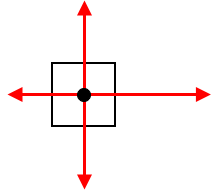Hold down the T key for 3 seconds to activate the audio accessibility mode, at which point you can click the K key to pause and resume audio. Useful for the Check Your Understanding and See Answers.
Balanced vs. Unbalanced Forces - help2
There are four similar versions of this question. Two of the versions include:
Version 1:
The diagram below represents the forces acting upon a rightward-moving object. Each arrow represents a force; the length of the arrow represents the strength of the force.

Is this object speeding up, slowing down, or moving at a constant speed?
Is this object experiencing balanced forces or unbalanced forces?
Version 2:
The diagram below represents the forces acting upon a rightward-moving object. Each arrow represents a force; the length of the arrow represents the strength of the force.

Is this object speeding up, slowing down, or moving at a constant speed?
Is this object experiencing balanced forces or unbalanced forces?